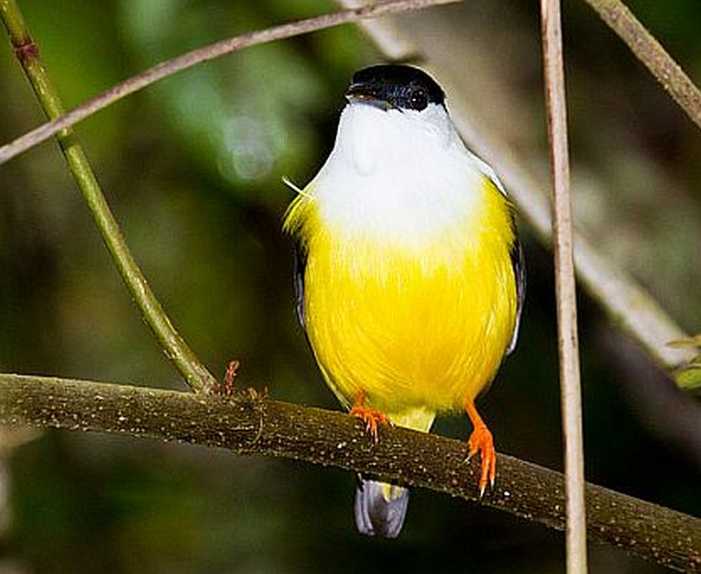ENSO, otherwise known as the El Niño Southern Oscillation, is one of the most startling examples of climate change. As we have to adjust everywhere to such changes in our everyday concerns, it is useful that research has discovered connections between an animal’s habitat and climate change.
Jared D. Wolfe, C. John Ralph of the Klamath Bird Observatory and the US Forest Service, with Pablo Elizondo of the Costa Rican Instituto Nacional de Biodiversidad (INBio) studied the Changes in the apparent survival of a tropical bird in response to the El Niño Southern Oscillation in mature and young forest in Costa Rica.
Mature forest encouraged the birds with enough water supply or --- other factors while young forest negatively influenced manikin survival. The full paper is available in the journal, Population Ecology.
Most have heard of the various ecological costs of replacing tropical rainforest with regenerating young trees. When the drought conditions of ENS change rainfall patterns for years, plants, water availability and fire regimes alter dramatically. Seabirds and migratory birds have been found to drop in population and move nesting times in efforts to counter the lack of water. The need to find how tropical ecosystems function under a dual threat from El Niño and habitat loss is urgent. Fruit and insect resources could be affected substantially enough to alter bird survival or simply behaviour, depending on species.
The advantage of mature trees and their canopy is in providing a homogenous environment, always sheltering from sun and wind. Understory moisture refugia have been proposed in these forests, providing facilities that organisms can’t find in the disconnected, lower canopy of young forests. Young trees may provide more fruit, but only in wet conditions. The red-capped manakin, Pipra mentalis switches from young growth forest in the wet season to mature forest in the dry season, as if to prove the point. In this research, the white-crowned manakin, Manacus caudei, was studied.
In this lengthy research, mist nets were set up to trap Manacus, from 1995 till 2007 in NE Costa Rica, in lowland wet broadleaf forest with plentiful watercourses. The Tortuguero National Park protects one of the wettest habitats in the country. 46 net sites. Measurements such as foliage density, soil moisture and canopy height were taken at the end of the period, but no forest was cut in that time. Measurement of the strength of La Niña and El Niño were made via SOI, using NOAA data on sea-level pressure differences.
Results indicated young forest survival of Manacus during La Niña (wet conditions) and stable survival of the manakin in both sets of extreme conditions when living in mature forest. The mature forest did have slightly lower survival rates in wet conditions, but that can be ascribed to other factors. Using computer models, only one out of three, associated the manakin survival with mature forest habitat, but different statistical techniques could well improve the modelling. The first documentation of ENSO influencing tropical bird survival therefore stands.
Whether local bird movements influenced the result is another argument. Mortality versus climate-induced dispersal is a difficult event to observe exactly, but the obvious conclusion is that ENSO caused it. Several other fruit-eating birds have been observed to switch to mature forest in dry conditions. The fate of the habitat is even more important. Complicated climate buffers operate in the fully mature forest, even for the white-crowned manakin that often prefers young forest for the food available there.
Mammals, insects, epiphytic plants and of course fish and amphibia can be expected to provide similar data in their ability to survive extreme conditions better in mature forest. It is at the species level that habitat alteration is clearly harmful. Food resources for some creatures could be unaffected by drought, for example, but even humans find it better to disperse than die. It is these vital resources of food and water that can begin to explain how best to fight the tragic losses we already have in the coming droughts and floods. Climate refugia have saved many species, probably even ourselves, in the past. It is too late for many habitats to be saved, but the outstandingly obvious rainforest example is one we simply must not ignore.
For a complete switch to Manacus courtship behaviour, explore the noisy leks of Panama’s golden-collared manakin in Athletic tropical courters!










